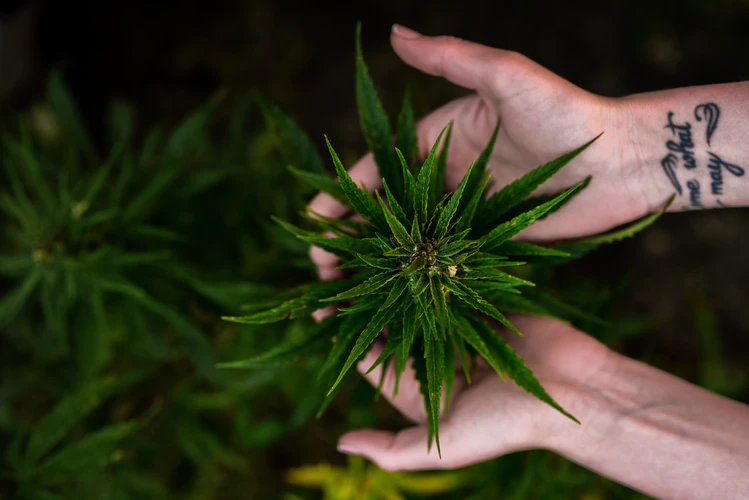The Cannabis Act of Canada, which came into force on October 17, 2018, formally legalized the cultivation, possession, acquisition, and consumption of cannabis and its by-products. Since then, many companies and investors became attracted to launch and invest in cannabis-oriented businesses, seeing that there is a lot of potential for this growing industry.
Canadians can grow 4 plants per household, but there are strict guidelines imposed by the government that one must observe before venturing towards this activity. Before cultivating cannabis, a license must first be procured from the Access to Cannabis for Medical Purposes Regulation (ACMPR) program of Health Canada. Getting approval, however, requires one to go through a rigorous process that requires professional help. Institutions that facilitate the procurement of licenses, like Cannabis Growing Canada, may be utilized for ease of the process.
Getting professionals also helps ensure that you are adequately guided through the process of getting an ACMPR license to grow in Canada and in complying with other requirements. Fortunately, for those interested and those who would like to get a better picture of how to go about the process, we have here a brief guideline.
Getting Started
You need to be licensed by Health Canada to be able to grow cannabis for sale. There are specific requirements that applicants must be willing to undertake to procure an ACMPR license from Health Canada. These requirements are as follows:
Familiarize Yourself with Relevant Laws
When applying for a license, one must first familiarize himself with the relevant federal and provincial, territorial, municipal, and indigenous government legislation. Applicable laws and guidelines include the Cannabis Act and its regulations, Food and Drugs Act, Canada Consumer Product Safety Act, environmental laws, zoning ordinances, Cannabis Tracking and Licensing System, Health Canada guidelines, and many more.
It would help that you research these relevant laws to equip yourself with the right knowledge before you engage in the cannabis business. These laws will also help you comply with the applicable requirements later on.
Determine the type of license you need
After doing your research, acquaint yourself with the classes and subclasses of licenses to determine which category your activities of interest fall under. Note that requirements for licensing differ depending on the type of license class and subclass you are applying.
In growing cannabis, there are a variety of licenses one may procure from Health Canada. It could either be a license for standard cultivation, micro-cultivation, or for a nursery. Standard and micro-cultivation licenses allow license holders to produce dried cannabis, fresh cannabis, cannabis plants, and cannabis seeds, depending on volume. However, a nursery license only allows the production of plants and seeds in a limited area.

Develop Cultivation Site
Applicants interested in cultivating cannabis are required to have a fully built site that meets the requirements of the Cannabis Regulations at the time of application. Applicants should consult relevant guidelines in developing a site.
Other than that, there are guidelines that Health Canada has provided to aid applicants. These guidelines include Cannabis Licensing Application Guide, Physical Security Measures Guide, Good Production Practices Guide, Security Clearances under the Cannabis Act and Regulations, among others.
Create an Account in the CTLS
Health Canada has established a Cannabis Tracking and Licensing System (CTLS) to facilitate applications primarily. It is required that applicants must first create an individual account before an application can be submitted to Health Canada.
In creating an account, you will need to furnish Health Canada your necessary information such as your full name and salutation, date of birth, email address, phone number, and other more relevant data. Afterward, Health Canada will provide an access code for you to enter in the CTLS. You will soon have an Account ID in the CTLS as soon as you have established an account.
In cases of applicants that are partnerships, cooperatives, and corporations, you will also need to create a corporate profile in CTLS.
Submit Application in the CTLS
Identify which license you are applying and then comply with the CTLS requirements. Next, submit your application with CTLS. Your request will go through a screening process.
During the screening, all applications, including attachments, will be strictly and thoroughly reviewed by Health Canada to determine completeness. Compliance with the applicable requirements of the regulations will also be verified at this period.
After passing the screening stage, security clearance applications will then be processed. This application will also undergo a detailed review. To aid in determining the propriety for the issuance of a license, Health Canada inspectors may or may not conduct an on-site pre-license inspection.
Issuance of License
After finding the application satisfactory and all clearances have been granted, a license for authorized activities will be issued. Immediately after the issuance of the cultivation license, holders may begin to undertake activities that are within the bounds granted by the license.
Takeaway
The cannabis business in Canada is still a young industry. Consequently, strict guidelines and rigorous processes are imposed to avoid abuse in managing this industry. Safety and security measures for growing cannabis plants are likewise closely monitored by Health Canada, with recommendations from the ministry. It will be a long process, but with research and professional guidance, starting a cannabis business in Canada is exceptionally viable.




